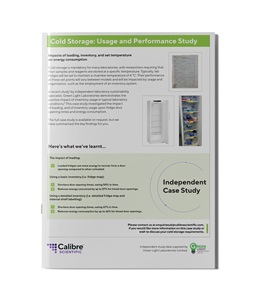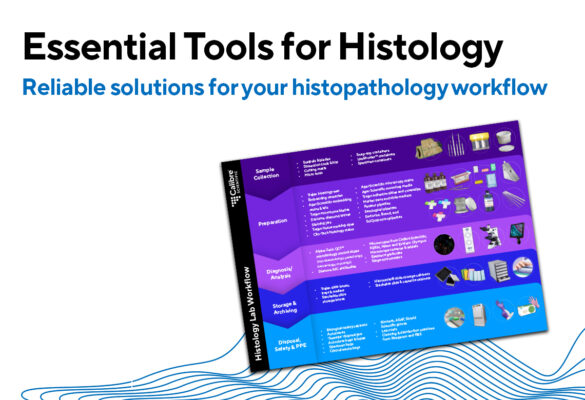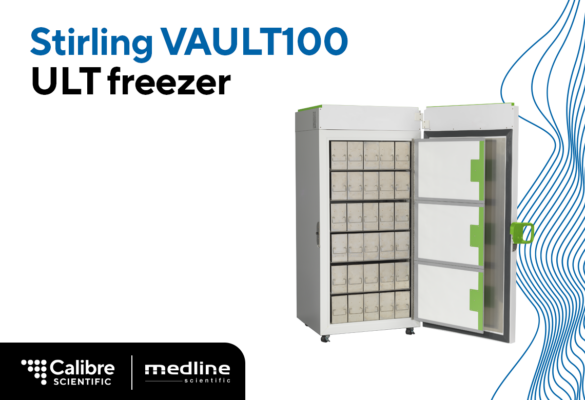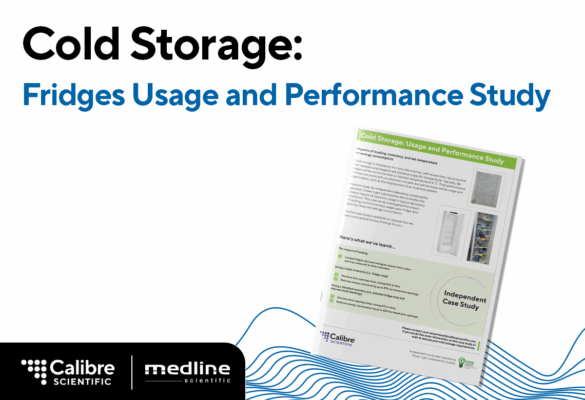
Nearly all labs require cold storage, and many will have a mixture of brands and configurations (upright, underbench, fan assisted etc.) with varying energy and temperature performance. However, organisational practices and end users’ actions can also influence running costs and waste.
In a recent study by sustainability specialist, Green Light Laboratories, new upright/tall fridges from 3 different manufacturers were studied to assess their performance and the impact of loading and inventory systems upon door opening recovery times and energy consumption.
This study looked at fan-assisted upright/tall models to gain valuable insight on:
- Temperature performance and recovery, and energy usage – unloaded and loaded.
- The impact of using a basic fridge map.
- The impact of using a more detailed fridge map.
The full case study is available on request, but we have summarised the key findings for you.
Here’s what we’ve learnt…
The impact of loading:
- Loaded fridges use more energy to recover from a door opening compared to when unloaded.
Using a basic inventory (i.e. fridge map):
- Shortens door opening times, saving 50% in time.
- Reduces energy consumed by up to 57% for timed door openings.
Using a detailed inventory (i.e. detailed fridge map and internal shelf labelling):
- Shortens door opening times, saving 67% in time.
- Reduces energy consumption by up to 62% for timed door openings.
Fridge performance data – unloaded
Testing conditions:
New upright/tall fridges from 3 different manufacturers were tested. When calculating fridge net capacity, space deemed unusable for storage was discounted, to allow for standardised energy consumption data (W/L/Day).1,2 The energy consumption and temperature performance of each fridge at the set temperature of 4 °C was measured. Each fridge was then subjected to a series of door openings.
Manufacturer A: Net usable capacity, 214 L; 5.57 W/L/Day
Manufacturer B: Net usable capacity, 410 L; 2.90 W/L/Day
Manufacturer C: Net usable capacity, 291 L; 3.15 W/L/Day
Unloaded, the door opening recovery time and energy required varied between the 3 different makes/models, as did their ability to cope with more frequent door openings. For example, Manufacturer B was the most energy efficient at setpoint 4 °C without door openings. However, this unit was the slowest to recover from a single 60s and 90s door opening. Manufacturer A used 77% more energy than Manufacturer C without any door openings but recovered the most quickly from the single 60s and 90s door opening. However, when recovering from sequenced door openings, Manufacturer C was the most energy efficient.
Insight: This study supports the findings from previous studies by Green Light Laboratories3, that choosing a suitable fridge for your lab is not as simple as picking the most energy efficient. End user requirements/actions (e.g. how often the fridge will be accessed each hour) should be considered. If you would like to discuss your requirements with our team, please contact us: enquiriesUK@calibrescientific.com.
The impact of loading on fridge performance
Testing conditions: All three fridges had identical loads. Two timed door openings were carried out on the loaded fridges (a single 60s and 90s door opening).
- Without any door openings, the energy consumption for each model was almost identical when loaded and empty.
- The energy required to recover from two timed door openings increased for two models once loaded:
- Manufacturer A: ↓13%; B: ↑188% and C: ↑100% in energy consumption.
The largest unit, Manufacturer B (410 L net usable capacity) demonstrated an increase of 188% in energy used, when loaded. Whereas the smallest, Manufacturer A (214 L) showed a 13% reduction.
- The energy required to recover from two timed door openings increased for two models once loaded:
- Manufacturer A: 0.013 kWh; B: 0.049 kWh and C: 0.012 kWh.
The impact of inventory management on energy consumption
Three scenarios were investigated2 with the access times measured:
- Unorganised: No inventory.
- Organised: Basic fridge map fixed to the outer door indicating the owner of each shelf.
- Highly Organised: Detailed inventory fixed to the outer door indicating ownership of each shelf space and the exact location of all contents. In chamber, each shelf was also labelled to indicate the owner.
Benefit 1: Shortened door opening times
The use of basic inventory management (exterior fridge map) had a clear positive effect on the time taken to locate/relocate samples, and therefore on the energy used.
- 50% reduction in time taken by introducing basic inventory (Organised Access) versus no inventory (Unorganised).
- Using the more detailed inventory cut door opening times by a further 17%.
Insight: Reducing the door opening times saves end users’ time. If used 240 days/year, the basic inventory would save 16.7 hours in door openings per fridge. Accessing fridges using the more detailed inventory would save 22.1 hours in door openings per fridge.
Benefit 2: Reduced energy consumption of door openings
The use of a simple fridge inventory had a significant positive impact upon energy consumption, highlighting the impacts that even simple action can have upon lab running costs.
- 57% reduction in energy consumption by introducing basic inventory (Organised Access) versus no inventory (Unorganised).
- Using the more detailed inventory cut door opening times by a further 5%.
As an example, Manufacturer C only used 0.007 (kWh) to recover from unorganised access. However, organised and highly organised accesses required no additional energy to recover from. The short door opening times resulted in small rises in temperature, which were recovered without any additional compressor activity being required.
Insight: Creating a basic inventory requires very little effort, simply naming who owns each shelf saved ≥50% in door opening times and energy consumption. As energy consumption falls so does the heat output into the laboratory, reducing air conditioning costs.
Download the summary article here.
To discuss your cold storage requirements in more detail; please contact us: enquiriesUK@calibrescientific.com.
- Two of the models had specific loading lines affixed to their chambers.
- Testing conditions can be found in the summary article. Alternatively, the complete case study is available upon request.
- LEC COLD STORAGE ENERGY & TEMPERATURE PERFORMANCE; LIEBHERR COLD STORAGE ENERGY & TEMPERATURE PERFORMANCE.






